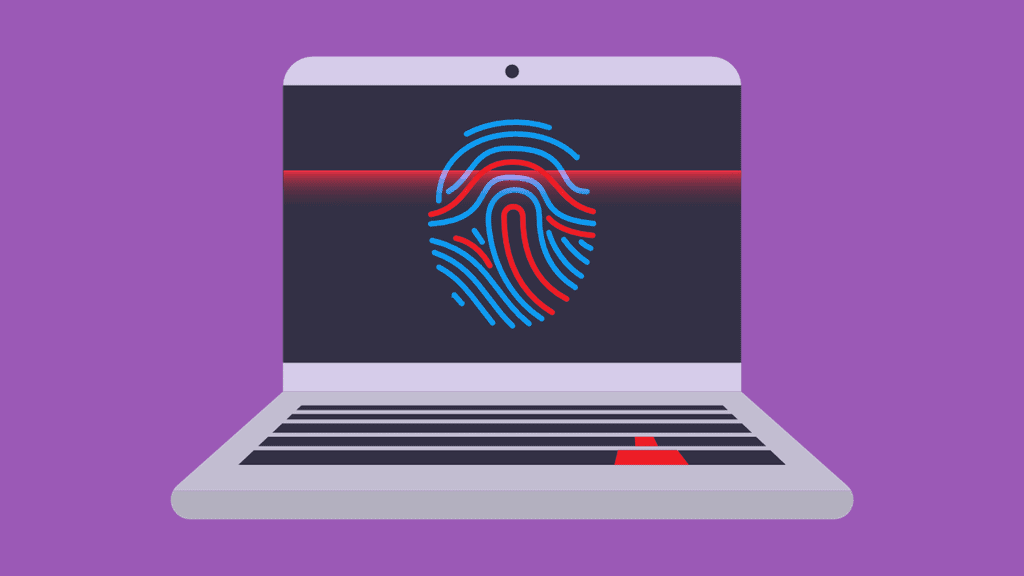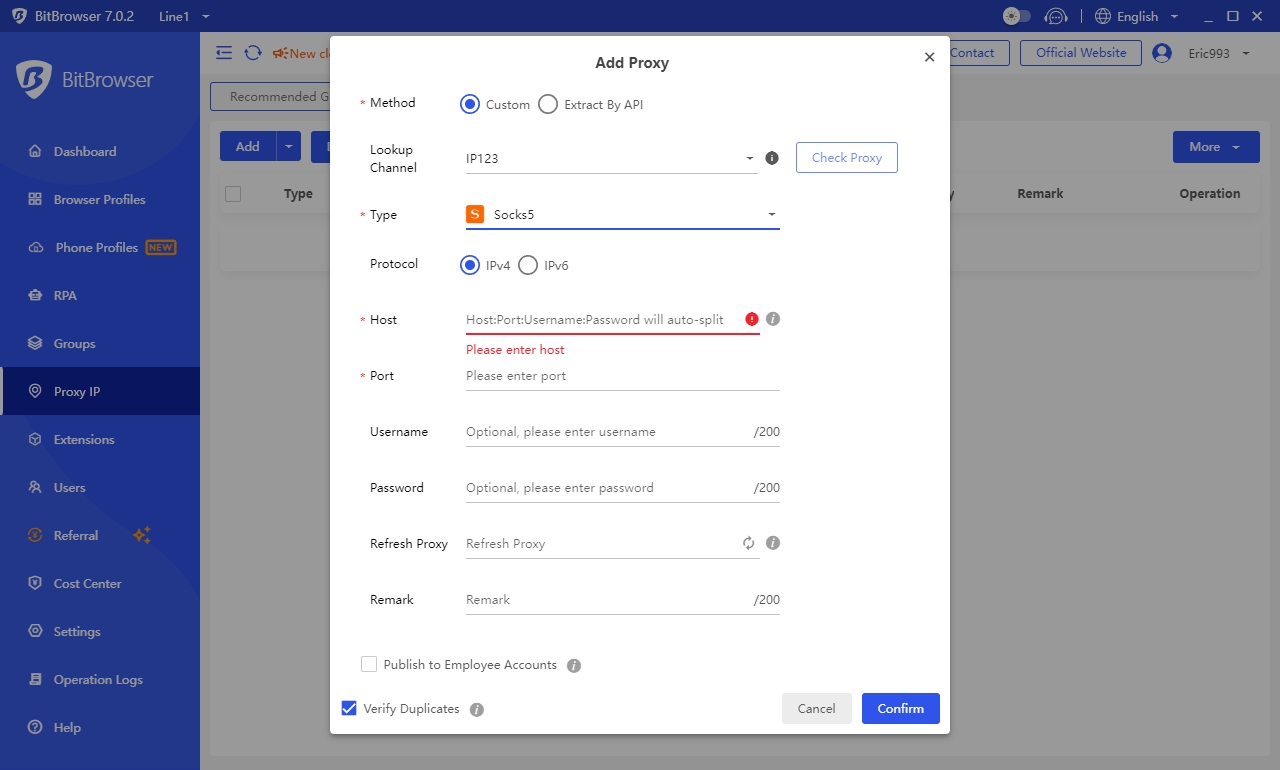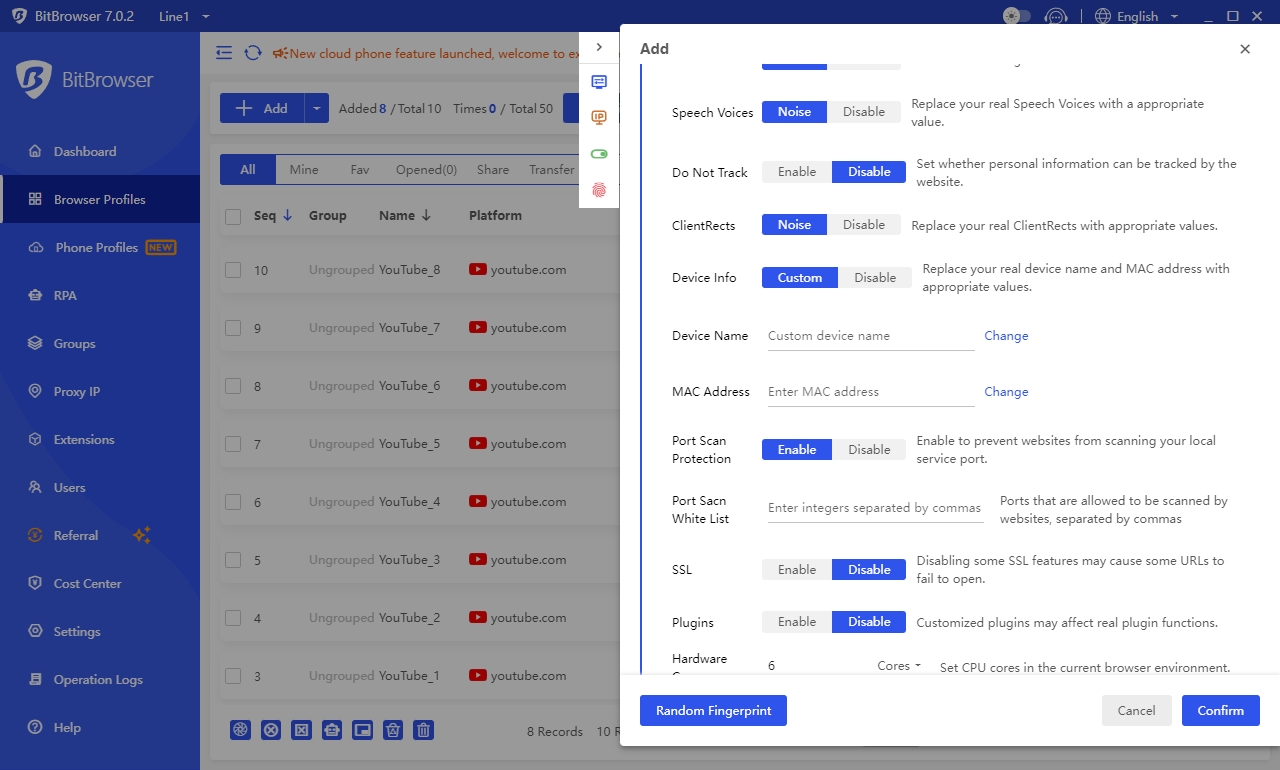
Hot Picks
How to Use BitBrowser for Multiple Bets?

Hot Picks
How to Automate Social Media Accounts

Hot Picks
How to Ensure Stable Facebook Operations When Managing Multiple Accounts
8 Most Commonly Used Browser Fingerprints And How Antidetect Browsers Help Avoid Them
Time: 2024-10-15 17:00 Click:

In this rapidly changing digital era, online user privacy has been a much-discussed topic in recent years and our online activities are highly transparent duo to the widely use of the browser fingerprinting technology and the third-party cookies. From the websites we visit to the devices we use, our every step of the move is being tracked, recorded and analyzed. However, is there anyway to combat browser fingerprinting? The answer is a resounding yes.
In this article, we will explore what browser fingerprinting is, how it works and examine 8 most commonly used browser fingerprints. By the end of the article, you will also learn how to prevent browser fingerprinting and better safeguard your online privacy.
What is Browser Fingerprinting?
You likely won't be surprised by this, yet a browser fingerprint is very much like a human fingerprint. While a real fingerprint depends on the unique patterns present within the ridges of the finger, the browser's fingerprint is created by the unique characteristics of the browser and the device.
Browser fingerprinting is a technique to identify and track users by collecting these unique characteristics. These characteristics, combined and analyzed, creates a unique "fingerprint" for each user, enabling websites to recognize returning visitors even if they are using privacy-enhancing technologies like private browsing modes.
Browser fingerprinting is a technique to identify and track users by collecting these unique characteristics. These characteristics, combined and analyzed, creates a unique "fingerprint" for each user, enabling websites to recognize returning visitors even if they are using privacy-enhancing technologies like private browsing modes.
How Browser Fingerprinting Works?
Each time you visit a website, your browser must provide the hosting server with a certain amount of essential information to guarantee that the website functions properly for your specific device.
This information can include, but is not limited to, the user agent string, browser plugins and extensions, screen resolution, operating system details, fonts installed on the device, supported media codecs, timezone, and even more subtle data points like how the browser renders specific HTML5 canvas elements.
The information is then hashed or encoded into a unique identifier that can be used to track users across different sessions and devices.
This information can include, but is not limited to, the user agent string, browser plugins and extensions, screen resolution, operating system details, fonts installed on the device, supported media codecs, timezone, and even more subtle data points like how the browser renders specific HTML5 canvas elements.
The information is then hashed or encoded into a unique identifier that can be used to track users across different sessions and devices.
8 Commonly Used Browser Fingerprints That You Should Know
Let’s break down into the 8 most commonly used browser fingerprints below.

1. User Agent: It uniquely identifies the browser, operating system, and version being used. It is sent with every HTTP request, making it a straightforward yet powerful fingerprinting method.
2. Canvas: It involves generating a unique fingerprint by rendering a complex image or text onto an HTML5 canvas element and then comparing the resulting image's pixel data with known patterns. Even small differences can result in a unique identifier for each user's device.
3. Fonts: This analyzes the fonts installed on a user's device by asking the browser to render text in various fonts. The presence or absence of specific fonts can help create a unique fingerprint.
4. WebGL: Similar to canvas fingerprinting, but leverages WebGL (Web Graphics Library) to render 3D graphics. The unique way a browser handles these renderings can be used as a fingerprint.
5. Plugins & Extensions: The types, versions, and configurations of browser plugins and extensions can also be used to identify users. Plugins like Flash or Java are particularly useful in this regard, though their use has declined due to security concerns.
6. HTTP Headers: Specific HTTP headers sent by the browser, such as Accept-Language (preferred language), Accept-Encoding (supported encodings), and DNT (Do Not Track) can be used to enhance a user's fingerprint.
7. Time Zone & Geolocation: While not strictly browser-based, a user's time zone and approximate location (often inferred from IP address) can also contribute to their overall fingerprint, especially when combined with other data points.
8. Audio Hashes: This involves playing a short audio clip and measuring how quickly the audio is processed or played back by the device's hardware and software. The variations in playback time can be used for fingerprinting.

1. User Agent: It uniquely identifies the browser, operating system, and version being used. It is sent with every HTTP request, making it a straightforward yet powerful fingerprinting method.
2. Canvas: It involves generating a unique fingerprint by rendering a complex image or text onto an HTML5 canvas element and then comparing the resulting image's pixel data with known patterns. Even small differences can result in a unique identifier for each user's device.
3. Fonts: This analyzes the fonts installed on a user's device by asking the browser to render text in various fonts. The presence or absence of specific fonts can help create a unique fingerprint.
4. WebGL: Similar to canvas fingerprinting, but leverages WebGL (Web Graphics Library) to render 3D graphics. The unique way a browser handles these renderings can be used as a fingerprint.
5. Plugins & Extensions: The types, versions, and configurations of browser plugins and extensions can also be used to identify users. Plugins like Flash or Java are particularly useful in this regard, though their use has declined due to security concerns.
6. HTTP Headers: Specific HTTP headers sent by the browser, such as Accept-Language (preferred language), Accept-Encoding (supported encodings), and DNT (Do Not Track) can be used to enhance a user's fingerprint.
7. Time Zone & Geolocation: While not strictly browser-based, a user's time zone and approximate location (often inferred from IP address) can also contribute to their overall fingerprint, especially when combined with other data points.
8. Audio Hashes: This involves playing a short audio clip and measuring how quickly the audio is processed or played back by the device's hardware and software. The variations in playback time can be used for fingerprinting.
How to Avoid Browser Fingerprinting with BitBrowser?
Now you already have a clear understanding of the 8 most commonly used browser fingerprints, but you might be worried about the protect of your online information. That’s where BitBrowser comes in. It helps configure these browser fingerprints to mimic real device data, making sure that each account has unique and isolated browser fingerprints on a single device.
For instance, you can configure a purchased proxy for each account. BitBrowser can then adjust the browser's language, location, time zone, and other fingerprints according to the proxy's IP address.

In addition, BitBrowser supports the setting of device names, MAC addresses, port scan protection, and more, offering even more comprehensive security for your accounts.

BitBrowser can help you better run and manage your multiple accounts without raising any suspicions or causing any suspensions.
For instance, you can configure a purchased proxy for each account. BitBrowser can then adjust the browser's language, location, time zone, and other fingerprints according to the proxy's IP address.

In addition, BitBrowser supports the setting of device names, MAC addresses, port scan protection, and more, offering even more comprehensive security for your accounts.

BitBrowser can help you better run and manage your multiple accounts without raising any suspicions or causing any suspensions.
Conclusion
Browser fingerprinting is a powerful tool for website owners and advertisers, but it also poses significant privacy concerns for users. To combat this, antidetect browsers have emerged. These browsers aim to obscure or randomize the browser fingerprints collected by websites, making it harder for them to uniquely identify or track users. By modifying user agent strings, disabling WebGL and canvas rendering, and other techniques, antidetect browsers provide an extra layer of privacy for those concerned about their online anonymity and security.

 Multi-Account Management
Multi-Account Management Prevent Account Association
Prevent Account Association Multi-Employee Management
Multi-Employee Management



